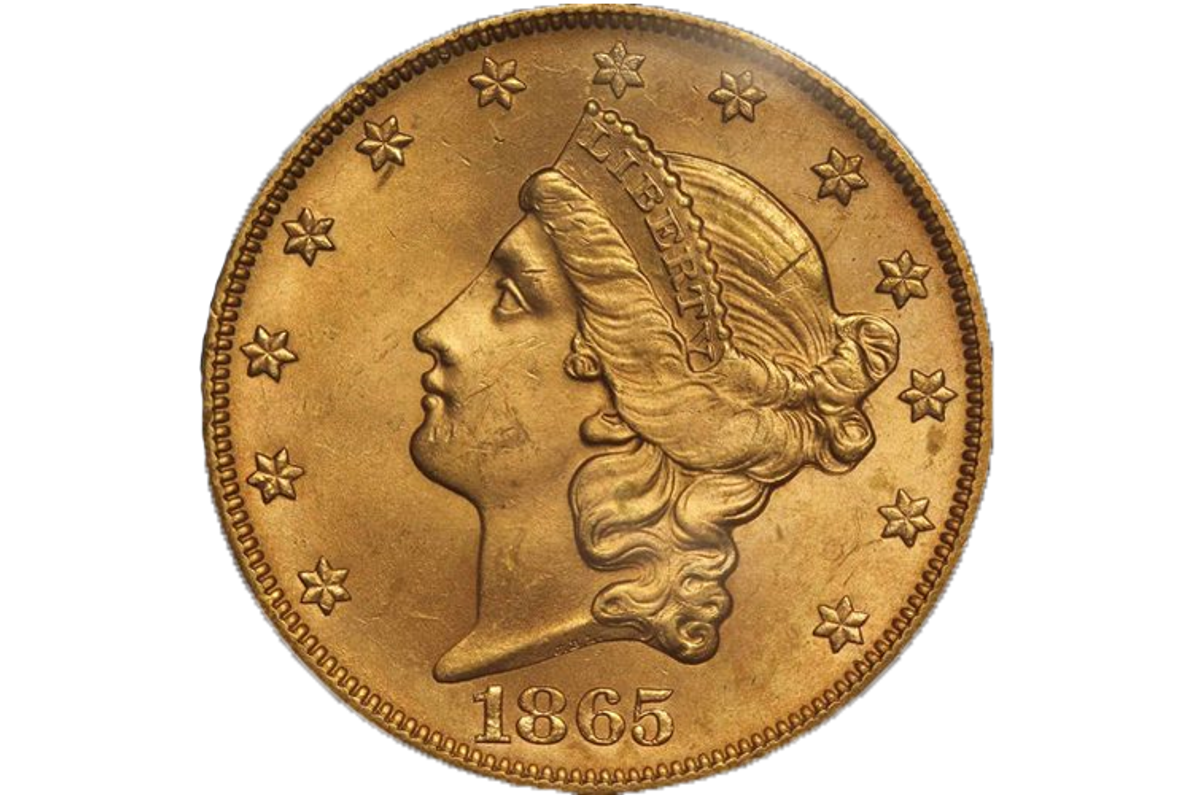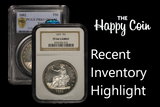The Brother Jonathan and the 1865-S Twenty Dollar Gold Liberty Double Eagle
As a young man, I was introduced to coin collecting through my grandfather. He loved and appreciated classic U.S. gold and silver coinage and was gracious and generous enough to make me feel as though it was our collection. I really loved his stories about history and the different events that some of our coins might have been a part of...I loved holding an object in my own hands that had passed through the hands of so many others, during some of the most challenging and momentous times in our nation’s history. It fascinated me that somehow a coin, a small, shiny, and valuable piece of precious metal and artistic beauty, had survived decades or centuries, only to end up in my hands. I still have many of these coins today, and I know and hold dear that, in a very real sense, they are a direct link to my grandfather, his affection and generosity, and most of all, the time we spent together.
One of my favorite coins is the $20 Gold Liberty Double Eagle. Liberty Head Double Eagles were minted for commerce from 1850 to 1907. It was designed by James Longacre, the 4th Chief Engraver of the U.S. Mint and perhaps best known as the designer of the Indian Head Cent. Longacre chose to show Lady Liberty in profile, surrounded by an array of 13 stars [13 original states], with the coin’s reverse showing a new design not used elsewhere on American coins. It consists of an eagle with a squared-off shield on its breast, holding arrows and an olive branch, with ornaments to the left and right, stars and rays above, and the inscription UNITED STATES OF AMERICA, TWENTY D. There are three types of Liberty Head double eagles: the 1850-1866 style with the denomination expressed as TWENTY D, the 1866-1876 style, with the denomination stated the same way but with the addition of the motto “IN GOD WE TRUST”, and the 1877-1907 type with the denomination stated as TWENTY DOLLARS.

One
of the more interesting Type I $20 stories is that of the 1865-S. It’s
likely that less than 3000 of these coins remain. Prior to the discovery
of the sunken steamer, the S.S. Brother Jonathan, the coin was all but
impossible to obtain in uncirculated condition. Interestingly, Brother
Jonathan was a popular culture personification of New England and, the
term, “Brother Jonathan”, achieved widespread fame during the
Revolutionary War. Its use waned in favor of “Uncle Sam”, which had come
to characterize the United States during the War of 1812.
The
steamship, “Brother Jonathan”, was originally used to ferry people and
freight between NY and Panama. After a series of owners and duties, she
ended up on the West Coast, primarily serving the Pacific Northwest and
supporting prospectors. On July 30th, 1865, the ship was
loaded with gold treaty payments for Indian tribes, as well as Wells
Fargo gold shipments bound for Portland and Vancouver. The Brother
Jonathan sank in poor weather and in sight of the port of Crescent City,
California. Almost all of the 244 souls on board perished and a
treasure of newly minted 1865-S Liberty Head $20 gold coins were lost
and left on the bottom of the sea. It was not until the fall of 1993
that the wreck of the Brother Jonathan was discovered. It took another 3
years for the recovery of 550 1865-S $20 Gold Liberty Double Eagle Type
I coins, among other items of interest and value. This gave rise to a
legal dispute between the State of California and Deep Sea Research
(DSR), the private entity which had found the wreck. The State and DSR
each asserted ownership of the wreck. The case made it all the way to
the US Supreme Court. In her majority opinion, Justice Sandra Day
O’Connor sent the case back to a lower court and the State of California
was awarded 20% of the treasure value.
Recent Posts
-
Recent Inventory Highlight: 1879 and 1882 Proof Trade Dollars
We recently purchased Proof Trade Dollars from 1879 and 1882, graded by NGC and PCGS respectively. T …Jun 18th 2025 -
Recent Inventory Highlight: 1853 US Assay Office $20 900 THOU Gold Piece - CAC and PCGS MS61
The Happy Coin was recently thrilled to come into possession of thrilling piece of American Frontier …May 10th 2023 -
Recent Inventory Highlight: 1913 Type 1 Buffalo Nickel
One of the perennial collector's coins in the American Numismatic Catalog, the Buffalo Nickel contin …Aug 31st 2022




